Double Eyelid Creation in Cambodia
Search and Compare the Best Clinics and Doctors at the Lowest Prices for Double Eyelid Creation in Cambodia

Find the best clinics for Double Eyelid Creation in Cambodia
No clinics available
Thailand offers the best prices Worldwide
Price: $ 220

- Home
- Cambodia
Compare Before & After Photos of _procedure_photos.phpDouble Eyelid Creation
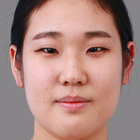

Front view
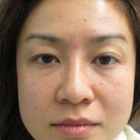

Front view
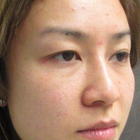

Half-side view
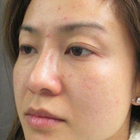

Half-side view
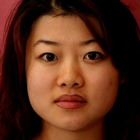
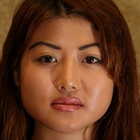
Front view

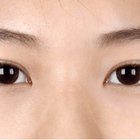
Front view
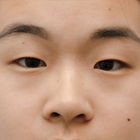
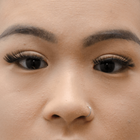
Front view
WHY US?
At Medijump, we're making medical easy. You can search, compare, discuss, and book your medical all in one place. We open the door to the best medical providers worldwide, saving you time and energy along the way, and it's all for FREE, no hidden fees, and no price markups guaranteed. So what are you waiting for?

Free

Best Price

Widest Selection

Risk-Free
What you need to know about Double Eyelid Creation in Cambodia

Also known as Blepharoplasty. This form of plastic surgery is used to correct defects of the eyelids or for aesthetically modifying the eye region of the face. It involves the removal of excess skin and fat from around the eyes and the reinforcement of the corresponding muscle and tendon tissues and is centered around the area between the eyebrow and the upper portion of the cheek. Double eyelid surgery creates a crease that makes the eyes appear larger and more alert. While Caucasians typically are born with a double eyelid crease, approximately 50% of East-Asians do not have a double eyelid crease. Therefore, double eyelid surgery is a highly specialized procedure performed mainly on persons of East-Asian descent. It is the most common type of plastic surgery performed in South Korea, Taiwan, and Hong Kong.
Double eyelid surgery is a safe and versatile surgery for Asians and other patients with monolids. The surgery makes the eyes appear larger and gives them a more alert appearance. There are different techniques that can be customized to achieve the desired results, tailored for each individual patient. Potential patients should consult with a board-certified plastic surgeon to determine which double eyelid surgery technique is the best option to achieve their desired results.
What is the cost of Double Eyelid Creation in Cambodia?
Deciding to go through with the Double Eyelid Creation can depend largely on the financial implications. The expenses associated with such an undertaking can fluctuate considerably due to varying factors. These could include the proficiency level of the surgeon, the complexity of the procedure, and usual prices within the region. Contact your local clinic for more information.
It's vital to remember that a majority of insurance firms do not cover aesthetic procedures such as the Double Eyelid Creation. This is due to the fact that such procedures are generally viewed as elective and not critical for maintaining health. Consequently, these costs are not factored in by health insurance companies. Hence, those who are contemplating this should seriously consider their financial situation and organize their resources accordingly.
What does a Double Eyelid Creation Procedure Involve?
Surgery is performed under local anesthesia and sedation will help you avoid pain and discomfort associated with the surgery. The Doctor draws pre-operative lines on your eyelids and incisions are made along your natural creases, as these creases hide your scars after you recover. If the surgery is planned for both the upper and lower eyelids, the upper eyelid is treated first. Excessive fat, skin, and muscle are removed through this incision and then it is stitched. The same procedure is repeated on the lower eyelid. Sometimes, incisions are made inside your eyelids, this is usually an option for dark-skinned people as white scars look prominent on their skin. Inside incisions will have inside stitches - bandages are applied over the wound.
The three most common techniques for creating a double eyelid crease are the Full Incision, Minimal Incision, and the Suture Technique - you will have the option to discuss with your surgeon about which is the most suitable treatment for you.
How Long Should I Stay in Cambodia for a Double Eyelid Creation Procedure?
This is a short surgical procedure performed in the outpatient department. It takes 1 to 3 hours in the operation theatre after which you do not need to stay in the hospital. You are discharged after a complete medical checkup which is carried out on the same day. You should stay in Cambodia for at least 14 days after you have undergone blepharoplasty surgery. During this period you are kept under observation and you will attend follow up checks. Your health conditions are monitored and stitches are removed after 5 to 7 days. If everything goes fine during this time, you can go home when allowed by your physician.
What's the Recovery Time for Double Eyelid Creation Procedures in Cambodia?
Immediately after the surgery, you will suffer from pain and discomfort and you will also experience blurred vision and puffiness of the eyes. Your eyes become sensitive to light and there is swelling and bruising in the initial days which will subside after 1 to 2 weeks. Several months are required before you will see the final results. You will have to take 2 to 3 weeks off work and after this, you can expect to return to office work. You will have to wait for at least 6 weeks if your job requires physical effort.
What sort of Aftercare is Required for Double Eyelid Creation Procedures in Cambodia?
Consider the following:
- Use ice packs to deal with the swelling and inflammation. Apply ice on your eyes 4 to 5 times a day immediately after the surgery.
- Do not smoke or drink because tobacco and alcohol decrease your natural healing ability.
- Avoid strenuous activities such as the gym, running, swimming, etc. for at least 10 days after the surgery.
- Use prescribed eye drops and ointments regularly.
- Look for any kind of irritation, redness or swelling. Visit your doctor immediately if you experience any issues.
- Do not rub your eyes.
- Avoid direct contact with sunlight. Do not go out for the first couple of days. Use sunglasses if necessary.
- Do not use contact lenses for at least 2 weeks.
- Sleep with your head at an angle of 45° that is slightly higher than your chest.
- Ensure your diet is rich in vitamins.
- Use clean gauze to change your bandage on a daily basis.
- Do not put stress on your eyes.
- Do not get your bandage wet as It can cause infection.
What's the Success Rate of Double Eyelid Creation Procedures in Cambodia?
Double Eyelid Surgery has a high success rate but issues can arise as with any surgery, for example, an infection, blood clot formation, scar hypertrophy, etc. Sometimes, there is re-drooping of your eyelids in cases of failed surgery. Usually, only one surgery is required, but if you are unsatisfied, another surgery is always possible, it will have to wait several months though to give your eyes sufficient time to recover from the primary surgery. According to a study, only 9.5% of the subjects showed some complications after the surgery and revision surgeries are performed in these cases. The rest of the subjects were completely satisfied with the results of the surgery.
For more information about Double Eyelid Surgery with before and after images, watch this short video.
Are there Alternatives to Double Eyelid Creation Procedures in Cambodia?
The following are some effective non-surgical alternatives to double eyelid surgery:
- Botox: with this method, botulinum toxin is injected into the eyelids. This causes relaxation of the muscle. It has immediate results which can last for 3 to 4 months. Follow up treatments will be required to maintain the results.
- Ultherapy: This method makes use of ultrasound rays to stimulate and boost collagen production in the deeper layers of your skin. It gives a fresh and youthful appearance to your skin along with tightening it.
- Dermal fillers: substances such as Restylane and Juvederm are injected into your eyelids. These fillers work to decrease skin lines and wrinkles. They give a lifted appearance to your eyelids.
- Skin resurfacing: a number of treatments come under this category. Such as laser resurfacing, micro-needling, laser treatment, etc. They are helpful in lifting your eyelids non-surgically.
What Should You Expect Before and After the Procedure
Prior to commencing the Double Eyelid Creation, it is necessary to undertake a few preparatory measures. Initiating with an exhaustive dialogue with your medical specialist is vital to comprehend the procedure's full scope and maintain feasible presumptions. The conversation should encompass potential threats, expenditure, recovery duration, and the precise surgical methodology to be employed. Preparatory measures for the procedure often involve particular limitations such as ceasing tobacco usage or abstaining from specific drugs that could escalate the risk of bleeding. It is also recommended to organize for someone to assist you at your residence during the early recovery stage.
The anticipations post-procedure can significantly diverge based on personal health circumstances and the particular surgical approach employed. You may experience some unease, inflammation, and potential blurring of eyesight immediately following the procedure. These symptoms should gradually subside after a few days. Your surgeon will furnish comprehensive instructions for post-operative care which typically comprises moderate usage of cold packs to aid in reducing inflammation, drugs to manage any discomfort, and counsel to evade strenuous exertions. It's vital to comprehend that the final outcome may not be completely discernible until several weeks following the procedure.
What are Potential Risks of Double Eyelid Creation?
Although the Double Eyelid Creation is frequently regarded as safe and successful, it's important to remember that any surgical intervention carries certain inherent risks. There could occasionally be adverse anaesthesia reactions that result in nausea or the want to vomit. Post-operative problems including bleeding or infection are also possible, albeit rarely. The used stitches may result in temporary discomfort, and there may be transient or permanent alterations in sensation or anaesthesia in the area of the eyelids.
When results don't live up to patient expectations, it may be necessary to do additional procedures. Individual characteristics, such as their particular physiological structure and how their body reacts to the operation, can have an impact on the final result. The possibility of facial asymmetry exists, despite its rarity. Patients are strongly recommended to select a highly qualified and experienced surgeon from a reputable clinic in order to reduce these risks. This will guarantee the treatment is completed safely and successfully.
Whilst the information presented here has been accurately sourced and verified by a medical professional for its accuracy, it is still advised to consult with your doctor before pursuing a medical treatment at one of the listed medical providers
No Time?
Tell us what you're looking for and we'll reachout to the top clinics all at once
Enquire Now

Popular Procedures in Cambodia
Prices Start From $16

Prices Start From $108

Prices Start From $101

Prices Start From $5

Recommended Medical Centers in Cambodia for procedures similar to Double Eyelid Creation

- Interpreter services
- Translation service
- Religious facilities
- Medical records transfer
- Medical travel insurance
- Health insurance coordination
- TV in the room
- Safe in the room
- Phone in the room
- Private rooms for patients available

- Interpreter services
- Translation service
- Religious facilities
- Medical records transfer
- Medical travel insurance
- Health insurance coordination
- TV in the room
- Safe in the room
- Phone in the room
- Private rooms for patients available

- Interpreter services
- Translation service
- Religious facilities
- Medical records transfer
- Medical travel insurance
- Health insurance coordination
- TV in the room
- Safe in the room
- Phone in the room
- Private rooms for patients available

- Interpreter services
- Translation service
- Religious facilities
- Medical records transfer
- Medical travel insurance
- Health insurance coordination
- TV in the room
- Safe in the room
- Phone in the room
- Private rooms for patients available

- Interpreter services
- Translation service
- Religious facilities
- Medical records transfer
- Medical travel insurance
- Health insurance coordination
- TV in the room
- Safe in the room
- Phone in the room
- Private rooms for patients available

- Interpreter services
- Translation service
- Religious facilities
- Medical records transfer
- Medical travel insurance
- Health insurance coordination
- TV in the room
- Safe in the room
- Phone in the room
- Private rooms for patients available

- Interpreter services
- Translation service
- Religious facilities
- Medical records transfer
- Medical travel insurance
- Health insurance coordination
- TV in the room
- Safe in the room
- Phone in the room
- Private rooms for patients available

- Interpreter services
- Translation service
- Religious facilities
- Medical records transfer
- Medical travel insurance
- Health insurance coordination
- TV in the room
- Safe in the room
- Phone in the room
- Private rooms for patients available
Double Eyelid Creation in and around Cambodia
Introduction
Perched in the heart of Southeast Asia, nestled between Thailand and Vietnam, lies Cambodia — a dynamic blend of ancient and contemporary worlds that makes for an intriguing adventure. Dominating its list of attractions is the globally-renowned Angkor Wat, embroidered by lush jungles.
It is the soul of Cambodia — its vibrant culture, warm inhabitants, profound historical heritage, stunning coastlines, delightful cuisine, and spirited nightlife — that gives this nation its unique charm. Each element, individually fascinating and collectively harmonious, weaves a magical tapestry that is Cambodia.
Over recent years, Cambodia has strategically bolstered its healthcare infrastructure, aiming to appeal to a global patient community. In this endeavor, the country has witnessed several of its hospitals forging partnerships with institutions from close-by countries, with Thailand being a significant partner.
These strategic alliances have been key in establishing state-of-the-art healthcare facilities across Cambodia. These healthcare establishments strive to cater to a diverse array of medical needs, ensuring the delivery of world-class, professional care that meets, if not surpasses, internationally accepted standards.
Cambodia is relentlessly driving efforts to enhance its healthcare sector, with one main goal - to give patients access to top-notch medical care at costs significantly lower than those in other Southeast Asian nations, Singapore being a prime example.
This strategic approach is geared towards attracting patients from regions like Laos, Taiwan, and China. The essence of this approach is to establish Cambodia as a major healthcare destination that offers high-quality medical services, all within a budget-friendly framework that doesn’t strain patients' finances.
Popular Cities and Regions in Cambodia
Phnom Penh is the capital of Cambodia, as well as the main medical tourism destination in the country. Once the ‘Pearl of Asia,’ this bustling city is now filled with bustling bars, historical architecture, vibrant café culture, a world-class food scene, and a glimmering Royal Palace.
Tourists venturing into Cambodia are invited to traverse the myriad attractions this enchanting nation has to offer. A must-visit is the National Museum of Cambodia which houses the country's extensive cultural history and art. For those who seek a deeper insight into Cambodia's past, the Tuol Sleng Genocide Museum provides a poignant yet important glimpse into the darker chapters of its history. In addition, the Royal Palace stands as a testament to Cambodia's architectural grandeur, drawing admiration from visitors across the globe. Another gem to explore in Phnom Penh is the Silver Pagoda, a unique blend of tranquility and exquisite craftsmanship, making for an unforgettable experience.
Moving beyond the capital city of Phnom Penh, Siem Reap emerges as another popular destination in the Cambodian travel circuit. This city, bustling with energy and soaked in history, captures the diverse ethos of Cambodia in its vibrant art, architecture, and local life. Inclusion of Siem Reap in any Cambodian itinerary lends an additional layer of cultural depth, making the exploration of this intriguing nation an even more enticing proposition. As such, whether it's diving into the past or experiencing the dynamic present, Cambodia offers a varied palette of experiences to delve into.
It’s where the fascinating, UNESCO-listed Angkor Wat is located. Aside from Angkor Wat, Siem Reap also offers other attractions, such as the Angkor Silk Farm, Wat Bo, War Museum, and Senteurs d’Angkor Botanic Garden. Those who want to relax on a beach should visit Sihanoukville. It was once a quiet beach town, but now it has become a modern up-and-coming holiday destination.
Transport in Cambodia
Phnom Penh International Airport stands as the largest and most bustling airport in Cambodia. Acting as a critical transportation nexus, it facilitates both domestic and international air travel. The airport offers numerous flight connections to various cities across Asia, making it a convenient choice for international tourists. Besides being a gateway into Cambodia, it also serves as a starting point for internal travel.
For tourists looking to cover various parts within the country swiftly, opting for domestic flights is a time-efficient choice. These flights are well-linked, providing easy access to different parts of this captivating country. Despite being the fastest mode of travel, they maintain reasonable fares, ensuring that the journey is equally enjoyable as the destination.
As one navigates within the cities, there is a disparity between the modes of transportation used for intra-city and inter-city travel. While trains and buses are the preferred options for traveling between different cities due to their affordability, city-based transportation adopts a different palette altogether. For daily city commutes and quick visits to local sights, taxis, tuk-tuks, and motorbikes are the most viable options. They're not only readily available but also allow for an intimate view of Cambodian city life. This dynamic and efficient transportation network significantly enhances the convenience of exploring Cambodia's stunning expanse.
Visas in Cambodia
- Citizens of 9 countries, including Laos and Singapore, can visit and stay in Cambodia for up to 30 days without a visa.
- Citizens of most other countries can apply for a visa on arrival or eVisa.
- All visitors must have a passport valid for at least six months beyond their intended date of departure from Cambodia.
Visa on arrival
- A visa on arrival can be obtained at any of the following Cambodian airports: Phnom Penh International Airport (PNH), Siem Reap International Airport (REP), and Sihanoukville International Airport (KOS).
- The visa on arrival fee is USD 30.
- Visitors who obtain a visa on arrival must have a valid passport and two passport-size photos.
eVisa
- An eVisa can be obtained online at the website of the Cambodian government.
- The eVisa fee is USD 35.
- Visitors who obtain an eVisa must have a valid passport and a digital photo.
Weather in Cambodia
Cambodia is blessed with a warm climate throughout the year, making it a destination for all seasons with temperatures seldom falling below 20°C. Cambodian weather is generally categorized into two primary seasons: wet and dry. The wet season, spanning from May to October, is marked by episodic showers during daytime hours, adding to the country's tropical charm.
The dry season, commencing from November and extending up to April, is typified by agreeable and sunny weather conditions, making it an ideal time for travel and exploration. However, it is worth noting that during the peak of the dry season, specifically in March, temperatures can climb up to a sweltering 35°C. Despite the somewhat extreme conditions, the resplendent beauty of the country remains undeterred, with Cambodia promising a riveting experience regardless of the season.
Additional Info
- Local Currency: Cambodian riel (KHR) is the official currency and 1 USD converts to approx. 4,161.63 KHR. However, USD is widely accepted.
- Money & Payments: ATMs are widely available and sometimes dispense US dollars. Credit cards are accepted in major cities. Tipping is expected and appreciated.
- Local Language: The official and mainly spoken language is Khmer. Some people also speak Vietnamese and Chinese. English is mostly used in tourist areas and major cities.
- Local Culture and Religion: About 97% of the population follows Theravada Buddhism. Islam, Christianity, and tribal animism make up the remaining 3%.
- Public Holidays: Victory over Genocide Day, Khmer New Year, King’s Birthday, Day of Remembrance, and Independence Day are some of the public holidays celebrated in Cambodia.
Popular Searches
- Plastic Surgery in Thailand
- Dental Implants in Thailand
- Hair Transplant in Thailand
- Breast Augmentation Thailand
- Gastric Sleeve in Thailand
- Gender Reassignment Surgery in Thailand
- Laser Hair Removal in Bangkok
- Botox in Bangkok
- Dermatology in Bangkok
- Breast Augmentation in Bangkok
- Coolsculpting in Bangkok
- Veneers in Turkey
- Hair Transplant in Turkey
- Rhinoplasty in Turkey
- Stem Cell Therapy in Mexico
- Rhinoplasty in Mexico
- Liposuction in Mexico
- Coolsculpting in Tijuana
- Rhinoplasty in Korea
- Scar Removal in Korea
- Gastric Sleeve in Turkey
- Bone Marrow Transplant in India
- Invisalign in Malaysia
- Plastic Surgery in the Dominican Republic
- Tummy Tuck in the Dominican Republic
- Plastic and Cosmetic Surgery in Poland
- Rhinoplasty in Poland
- Hair Implant in Poland
- Dental Implants in Poland
- IVF in Turkey